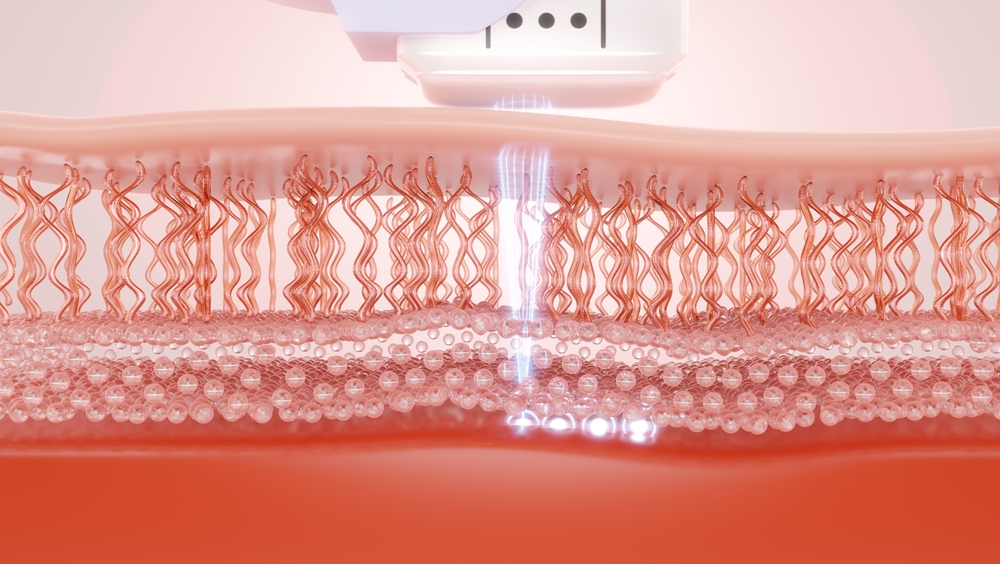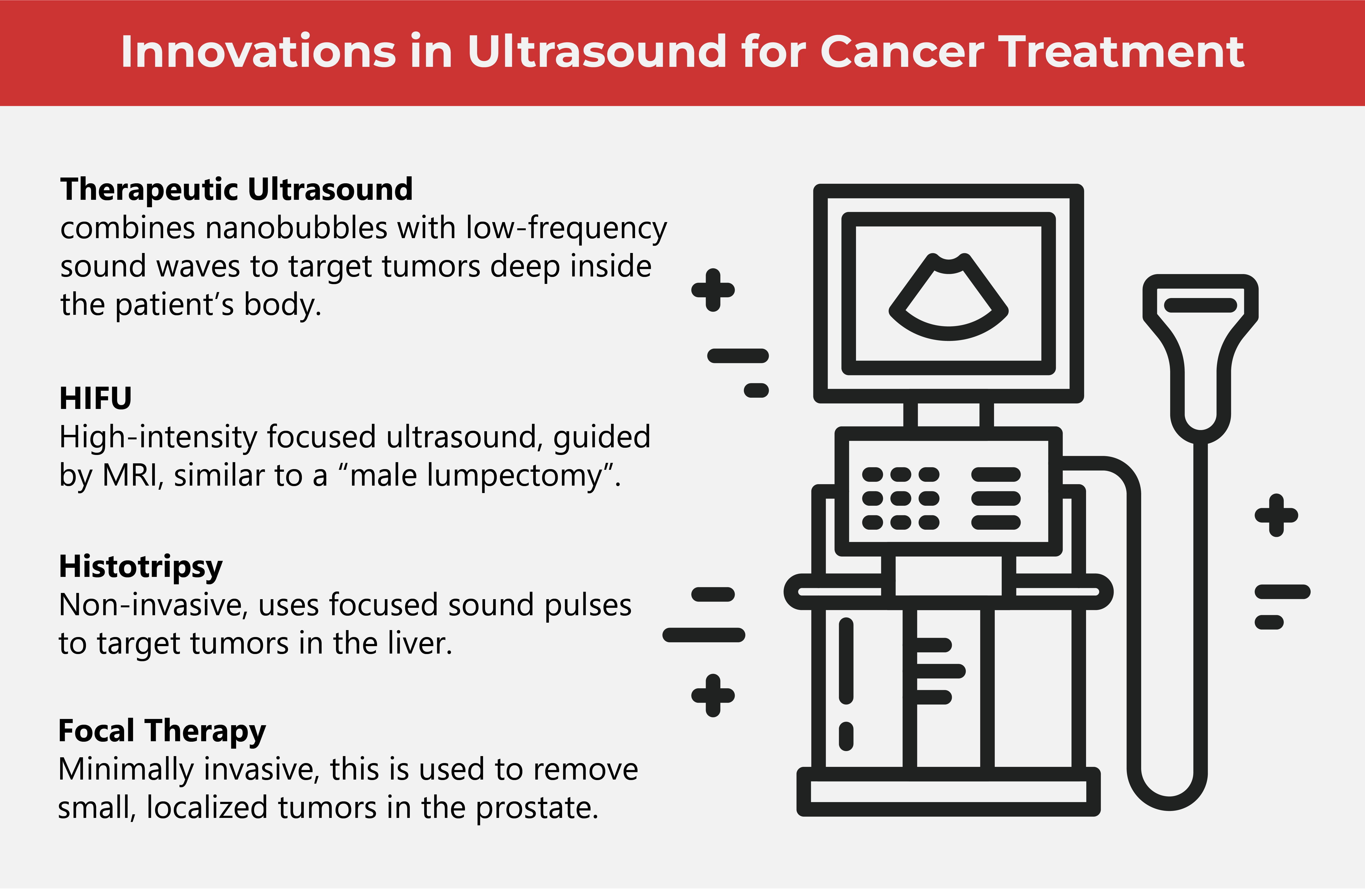Cancer-Beating Sound Waves To The Rescue

Amazing innovations in sound wave technology, or ultrasound are proving that not only can this be used to diagnose cancer in patients, it can also be applied to treatment. Even better? These treatments are non-invasive. And that’s just for starters!
Where cancer treatment is concerned, every new discovery could potentially save thousands of lives. Sound wave technology, or ultrasound, has made large strides in treating cancer in 2022. Let’s take a closer look at a few of these notable innovations.
(Also read: Taking Breast Cancer To Heart at IMI)
New tech with Nanobubbles
Conventional cancer treatment has started to include the use of ultrasounds combined with microbubbles injected directly into the tumor. Microbubbles contain the cancer-killing medicine, and are capable of getting inside wherever red blood cells go. To the human immune system, these microbubbles resemble human cells, so these do not trigger an immune response.
This type of treatment is called Therapeutic Ultrasound. Its many advantages versus other types of treatment such as surgery and radiation are that it is a more focused, targeted treatment, is very precise, and can be very effective in the treatment of solid tumors found deep inside the patient’s body.
While the advantages of Therapeutic Ultrasound is numerous, the downside is that because of the heat and high intensity of the sound waves, there may be damage caused around the tissues close to the tumor.
Today, researchers from Tel Aviv University have found a way to improve on existing Therapeutic Ultrasound. Instead of microbubbles, they have explored the use of nanobubbles. In their study, the researchers, led by surgeons Dr. Jonathan Coleman, have injected these nanobubbles into the bloodstream instead of directly into the tumor. And instead of high-intensity ultrasound, this is combined with low-frequency sound waves.
The result? The researchers found that there is minimal damage to the area surrounding the tumor.
The surgeons are adding that this innovation in Therapeutic Ultrasound is “safe, more affordable, and clinically available.” The use of nanobubbles combined with low-frequency sound waves allow the targeting of tumors as these can be closely observed with the help of ultrasound imaging. What’s more, this innovation in the treatment allows for deeper penetration and even enlarges focal point.
This type of treatment can benefit patients of breast cancer.

Treating Prostrate Cancer with Sound Waves
Two innovations stand out when it comes to the treatment of prostate cancer. One is Focal Therapy, which is used to target and treat small tumors found in only one area of the prostate. The other is called HIFU, or high-intensity focused ultrasound treatment, which helps control prostate cancer while giving fewer side effects.
Focal Therapy is also called “partial gland ablation”. It is less invasive than conventional treatment, is safe and effective, and does less harm to healthy, surrounding tissue.
It makes use of real-time imaging to guide the treatment, and amazingly, doctors are saying this can be done as an outpatient treatment that can be completed in two hours.
However, not all prostate cancer patients may use this treatment. Certain criteria must be met for a doctor to recommend this. One of these is that the tumor must be small and localized.
On the other hand, there’s HIFU. Doctors at the Memorial Sloan Kettering Cancer Center (MSKCC) use this in tandem with magnetic resonance imagery (MRI) to treat cancer. Says Dr. Behfar Ehdaie, this is akin to a “male lumpectomy”.
HIFU’s clinical trial was published in the medical journal Lancet Oncology in 2022, which signaled a big step in having the treatment considered a more mainstream type of treatment for prostate cancer.
Here’s how HIFU works. After a patient is administered anesthesia, they are placed inside an MRI machine, covering the lower part of their body. Then, the machine takes an image of the prostate, allowing doctors to outline the area of treatment. The doctors can then direct the ultrasound, guided by the MRI. The sound waves come in different directions, crossing and intersecting to destroy cancer cells.
One notable patient who has undergone HIFU treatment is John Brannan, who calls it “a phenomenal use of technology.”
Liver Love
Liver cancer treatment has also improved thanks to sound wave technology. An all-female team of surgeons was able to save a patient through the use of Histotripsy in a new clinical trial done in Wisconsin.
Also a non-invasive form of treatment, Histotripsy makes use of focused sound pulses to target and destroy tumors in the liver. It is a very precise form of treatment that does less damage to surrounding tissue.
The lead surgeon, in this case, was Dr. Amanda Smolock, a vascular and interventional radiologist. The team hopes to submit their findings to the FDA for approval.
As one of the Top 25 EMS companies in the world, IMI has over 40 years of experience in providing electronics manufacturing and technology solutions.
We are ready to support your business on a global scale.
Our proven technical expertise, worldwide reach, and vast experience in high-growth and emerging markets make us the ideal global manufacturing solutions partner.
Let's work together to build our future today.
Other Blog




